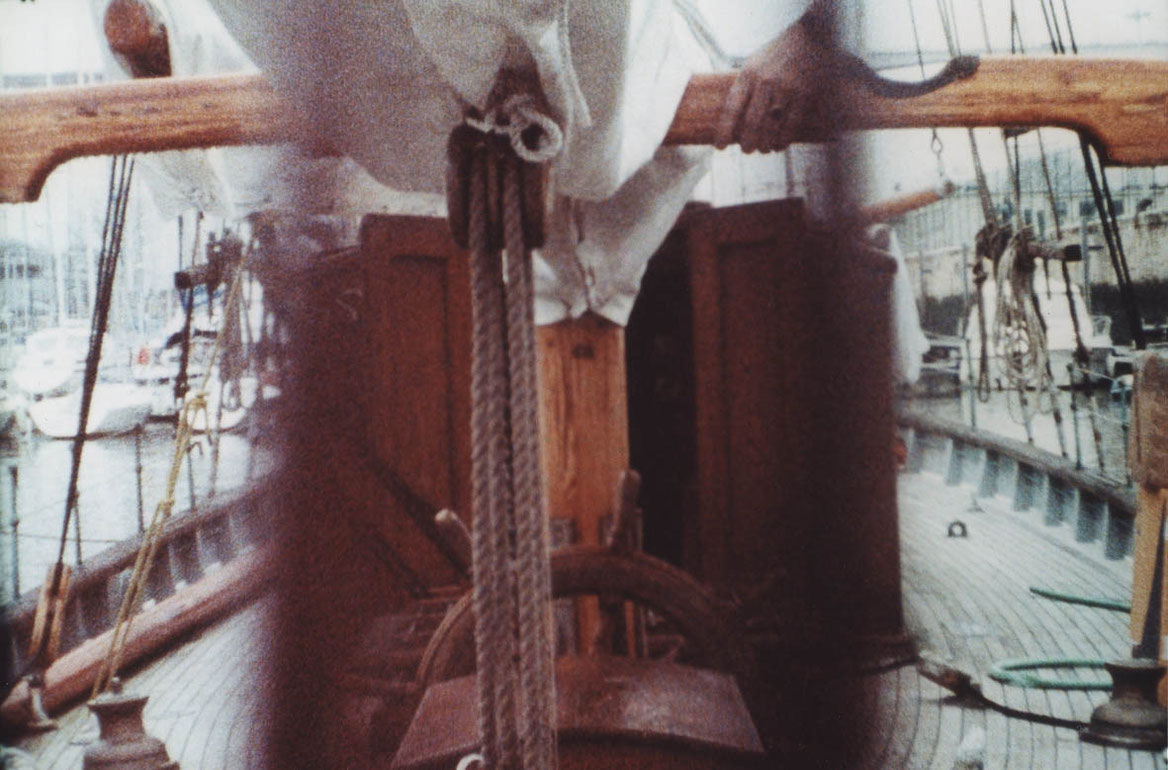Hallowe´en
What makes up a (film) image?
At first Kerstin Cmelka dissects a view of a sailboat tied up in a harbor. Using masks, three vertical segments of this scene are exposed from the same point-of-view at different points in time, and for each exposure the film strip goes through the camera at a different speed. As a projection, a "whole object" seems to appear, though a number of distortions are evident. Not only that the boat rocks unevenly with the water´s motion, the camera on the pier moves gently and constantly from side to side. The varying speeds of the individual segments produce a convulsive, accordion-like movement which oscillates somewhere between wriggling and almost complete motionlessness. The concrete object in front of the camera´s lens thereby withdraws from actual perception; what remains is a composite image of an object in various states (and types of motion) which is concentrated on the simultaneity of these snapshots´ non-simultaneous elements. As a result, the synthesis of the image first seems to take place in the soundtrack at first, a constant creaking of the lines and the boat´s rigging. In the moments when part of the visual triptych is replaced by a black frame, the corresponding portion of the background noise also goes quiet, revealing that the acoustic aspect is a construction in rigid synchronicity with the matching image sections.
(Gerald Weber)
Translation: Steve Wilder
Hallowe´en
2003
Austria, Germany
3 min

